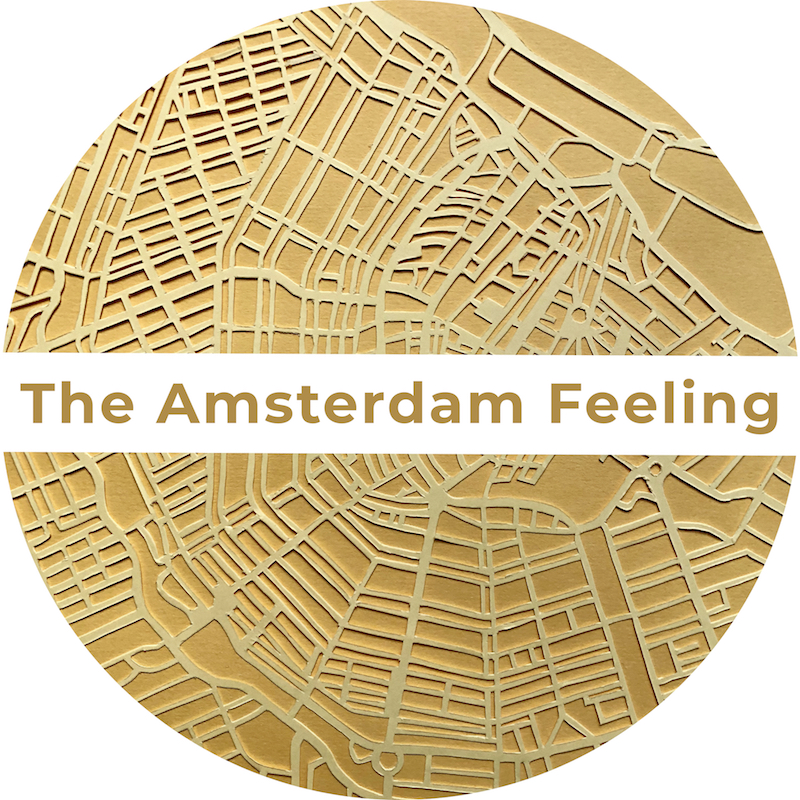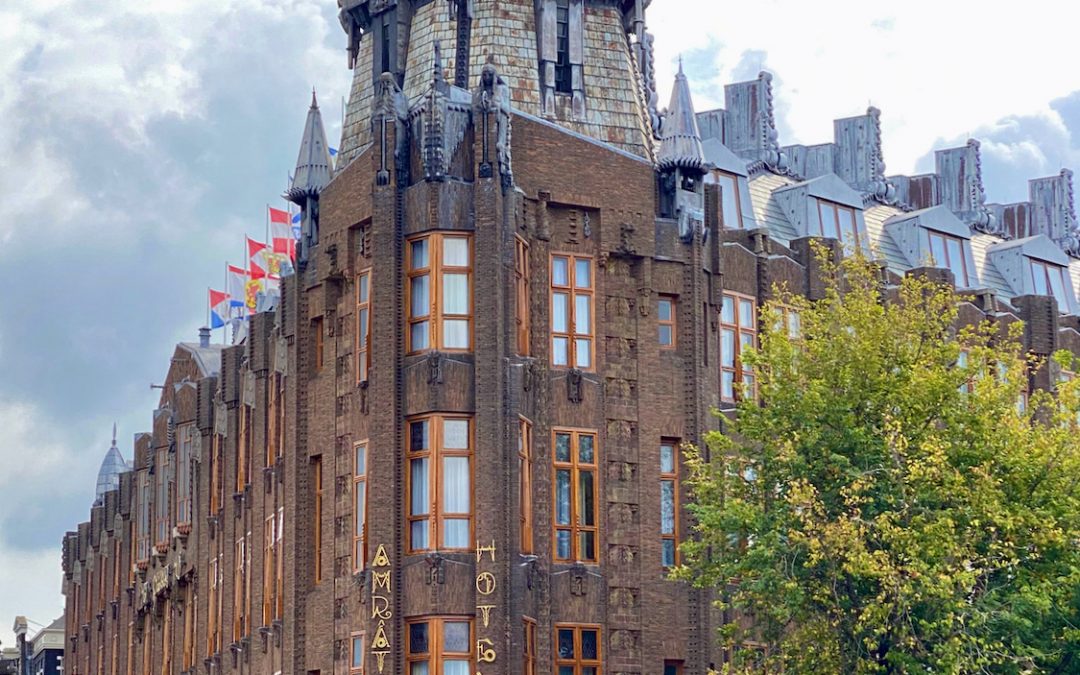Last Updated on May 25, 2024 by Christian Heide
Situated in the heart of Amsterdam, the Grand Amrath Hotel is an important site and testament to the city’s rich architectural heritage and vibrant history. This luxurious five-star hotel, located in the Scheepvaarthuis (Shipping House), is not only a haven for travelers seeking comfort and elegance but also an iconic example of the Amsterdam School of architecture. This architectural movement, which flourished in the early 20th century, is celebrated for its expressive and ornate style, and the Grand Amrath Hotel is a quintessential representation of this design ethos.
The Birth of the Amsterdam School
Before delving into the architectural intricacies of the Grand Amrath Hotel, it is essential to understand the Amsterdam School. Emerging around 1910 and continuing into the 1930s, this movement was characterized by its emphasis on brick construction, intricate masonry, and an expressive use of ornamentation. It was a reaction against the austere functionality of earlier architectural styles, instead embracing a more decorative and human-centered approach.
The Amsterdam School architects, including Michel de Klerk, Piet Kramer, and Johan van der Mey, were inspired by Art Nouveau, Expressionism, and the English Arts and Crafts Movement. Their buildings often feature elaborate brickwork, organic forms, and extensive use of sculpture and decorative arts, creating structures that are as much works of art as they are functional spaces.
The Scheepvaarthuis: A Historical Landmark
The building that now houses the Grand Amrath Hotel was originally known as the Scheepvaarthuis. Designed by Johan van der Mey and completed in 1916, it was commissioned by a coalition of six leading Dutch shipping companies. The structure was intended to serve as their headquarters, symbolizing the Netherlands’ maritime prowess and the shipping industry’s significance to the national economy.
Van der Mey, with contributions from de Klerk and Kramer, crafted a building that is a masterpiece of the Amsterdam School. The Scheepvaarthuis is characterized by its expressive brickwork, organic forms, and extensive use of maritime motifs. These elements combine to create a visually stunning and richly symbolic edifice.
Architectural Elements of the Grand Amrath Hotel
As you approach the Grand Amrath Hotel, the first thing that strikes you is the intricate and imaginative facade. The building’s exterior is a tapestry of brickwork, with each brick laid in a way that creates a dynamic, flowing surface. This brickwork is punctuated by decorative stone carvings and wrought iron details, adding layers of texture and visual interest.
1. Facade and Ornamentation
The facade of the Grand Amrath Hotel is a prime example of the Amsterdam School’s approach to ornamentation. The brickwork is meticulously crafted, with bricks of varying sizes and shapes used to create patterns and textures. This creates a sense of movement and depth, making the building feel alive. Ornamental details, such as the wrought iron railings and stone carvings, often depict maritime themes, paying homage to the building’s origins.


2. Sculptural Elements
The Scheepvaarthuis is renowned for its extensive use of sculpture. Statues and reliefs adorn the facade, many of which were designed by renowned sculptors such as Hildo Krop. These sculptures often depict sailors, ships, and sea creatures, celebrating the building’s connection to the maritime industry. This use of sculpture adds a narrative element to the architecture, turning the building into a storybook of the sea.
3. Interior Design
Stepping inside the Grand Amrath Hotel, visitors are greeted by an interior that is as lavish and detailed as the exterior. The lobby features stunning stained glass windows, ornate woodwork, and custom-designed furniture. The use of rich materials and intricate craftsmanship is a hallmark of the Amsterdam School, creating an environment that is both opulent and welcoming.
The hotel’s public spaces and guest rooms continue this theme of luxury and detail. From the grand staircase with its elaborate railings to the sumptuous dining rooms adorned with murals and decorative lighting, every element has been designed with care and precision. The interior design not only reflects the building’s historical roots but also ensures a comfortable and memorable stay for guests.



4. Maritime Motifs
One of the defining characteristics of the Grand Amrath Hotel is its use of maritime motifs. These are evident throughout the building, from the exterior sculptures to the interior decor. Ship prows, waves, and sea creatures are recurring themes, creating a cohesive design narrative that celebrates the building’s history and location. These motifs are not only decorative but also imbue the space with a sense of identity and purpose.
Conclusion: A Living Legacy
The Grand Amrath Hotel is more than just a place to stay; it is a living museum of the Amsterdam School. Its rich architectural details, expressive design, and historical significance make it a must-visit for anyone interested in architecture and history. Staying at the Grand Amrath is like stepping back in time to an era of craftsmanship and artistic expression, while still enjoying the luxuries of modern hospitality.
In a city renowned for its canals and historic buildings, the Grand Amrath Hotel stands out as a unique and captivating landmark. Whether you are an architecture enthusiast, a history buff, or simply a traveler seeking a memorable experience, the Grand Amrath Hotel offers a glimpse into the artistic and cultural heart of Amsterdam.




